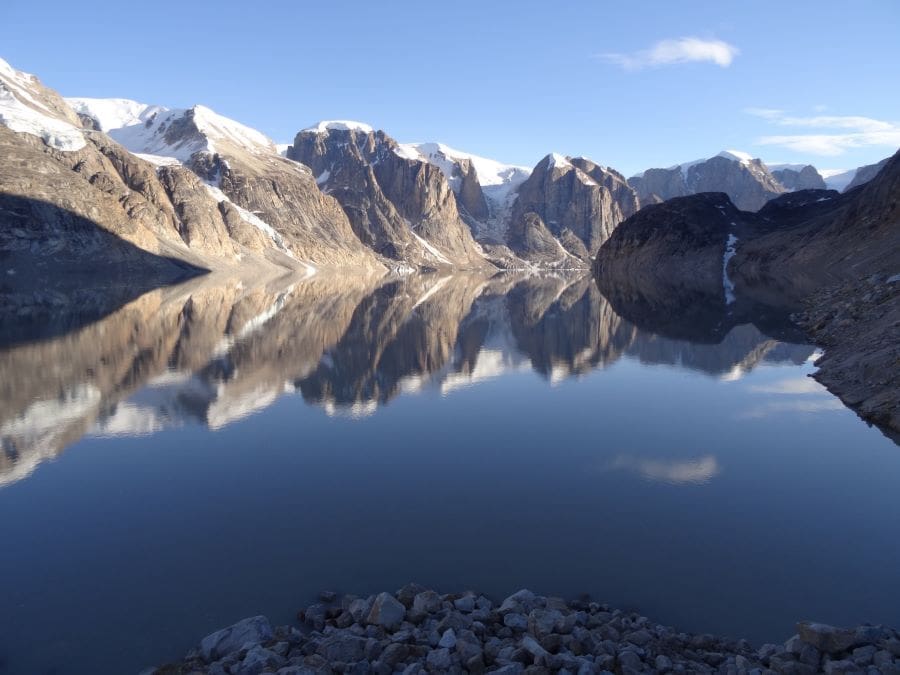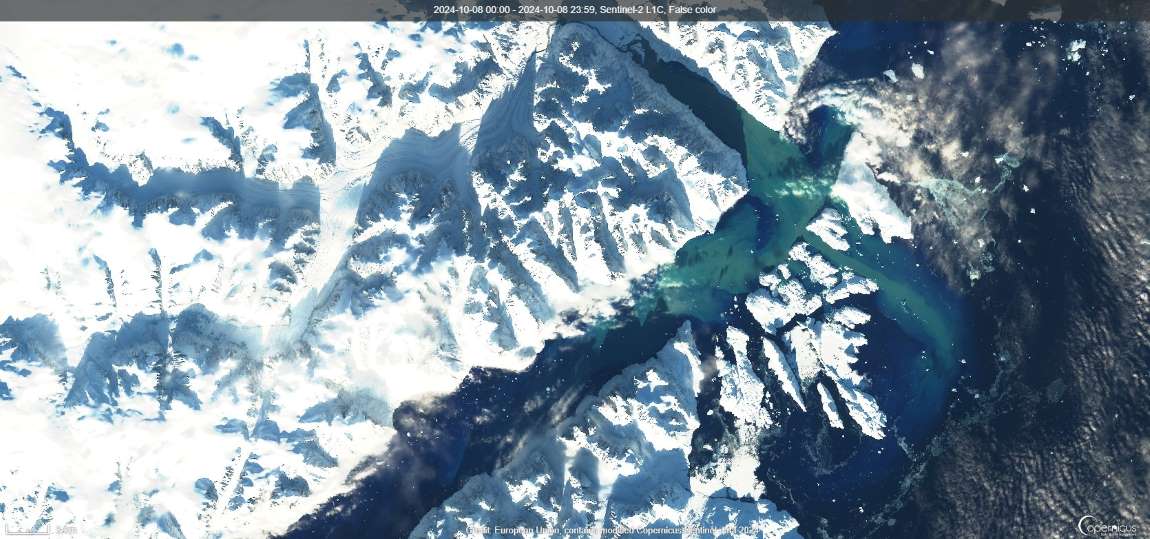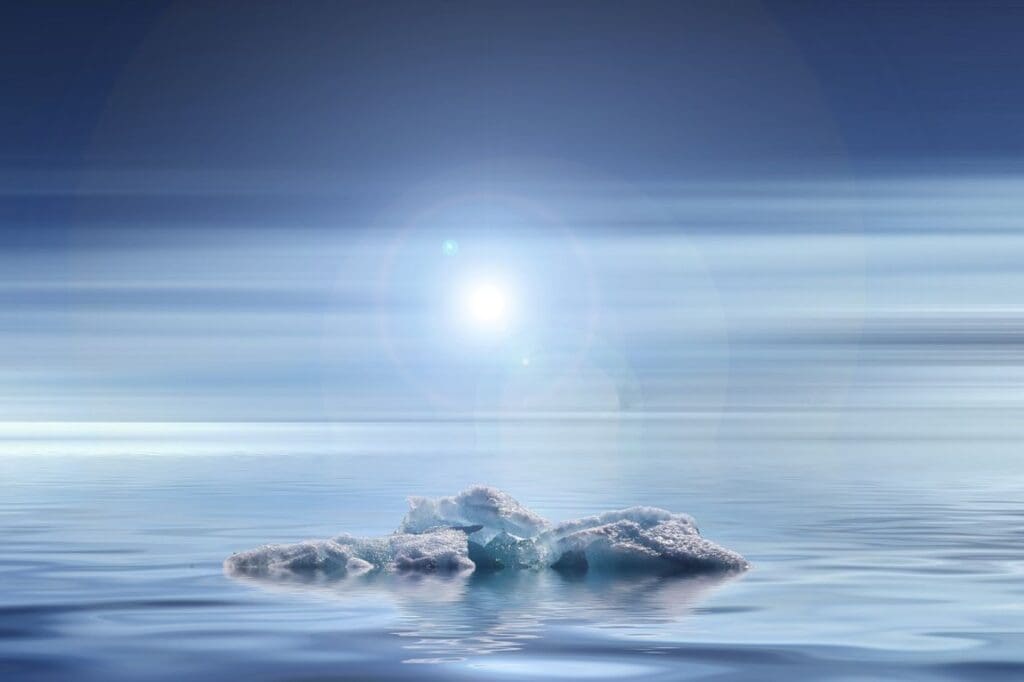For the first time, researchers have successfully observed the release of an enormous glacial flood in East Greenland, discharging over 3,000 billion liters of meltwater within days. The rare event offers unprecedented insight into the immense forces unleashed by meltwater, which could pose significant risks in vulnerable regions worldwide.

Imagine a massive reservoir atop a mountain, containing water equivalent to three years of Denmark’s total consumption, suddenly bursting. This was the scenario when the glacial lake Catalina in East Greenland released 3.4 cubic kilometers of meltwater – an extraordinary 3,000 billion liters – into Scoresby Sound Fjord.
The flood, ranked among the top three of its kind ever documented, occurred between September 23 and October 11. During this time, the lake’s water level dropped by an astonishing 154 meters. Researchers from the University of Copenhagen’s Niels Bohr Institute were the first to monitor such an event in real time, using satellite imagery.
“We have previously found traces of similar outburst floods, but due to polar night and clouds obstructing the potential for satellite observations, this is the first time that researchers have been able to monitor an event and measure the water volumes in real time,” said Aslak Grinsted, a climate researcher at the Niels Bohr Institute.
A phenomenon on the rise
The glacial flood was triggered after 20 years of meltwater accumulation in Catalina Lake, located in a valley blocked by the massive Edward Bailey Glacier. As the lake filled, its water began lifting the glacier, creating a tunnel over 25 kilometers long beneath the ice. This pathway allowed the water to escape into Scoresbysund Fjord, the world’s largest fjord system.

Such events, known as Glacial Lake Outburst Floods (GLOFs), have become more frequent over the past three decades due to rising global temperatures.
“The danger from glacier-dammed lakes is increasing due to global warming. It’s vital to improve our understanding of this phenomenon to issue timely warnings should there be an imminent risk,” explained Grinsted.
In densely populated regions like the Himalayas, GLOFs have caused devastation, destroying villages and infrastructure. Fortunately, the Greenland event had no immediate human impact due to the area’s sparse population. However, global risks remain significant: a 2023 study found that 15 million people worldwide live under the threat of potentially deadly glacial floods.
“I expect that we will witness outbursts from even larger ice-dammed lakes as Greenland’s ice sheet retreats in coming centuries. At the end of the last Ice Age, Lake Missoula had an outburst that was 2,500 times larger than the recent Catalina event. To understand these massive forces, we must study the largest outbursts when they occur,” Grinsted added.
This groundbreaking observation highlights the growing need for monitoring and preparedness as climate change accelerates the formation of glacial lakes and raises the stakes for communities living in their potential flood paths.
***
Comparable to the energy of the world’s largest nuclear power plant
The energy released by glacial lake outburst floods is staggering. “In this case, the energy released by the glacier flood was equivalent to the output of the world’s largest nuclear power plant running at full capacity for 22 days,” explains Aslak Grinsted.
According to the researcher, it’s worth considering how to harness the immense energy of such natural phenomena as a source of green energy. In theory, the energy released from the Catalina Lake event could have continuously provided 50 megawatts of electricity, enough to meet the needs of a small town. However, in this instance, the nearest settlement is 180 kilometers away and inhabited by a mere 350 residents – posing a significant technological challenge for energy utilization.
“As with many other natural resources in Greenland, infrastructure is a problem. But if a brilliant engineer could figure out how to harness these meltwater outbursts, there’s enormous power and energy potential in them,” concludes Grinsted.
Article Source:
Press Release/Material by University of Copenhagen
Featured image: Image of the glacial river flowing into the Scoresbysund fjord taken by the Sentinel satellite. Credit: European Union, Copernicus Sentinel-2 imagery (L1C)




